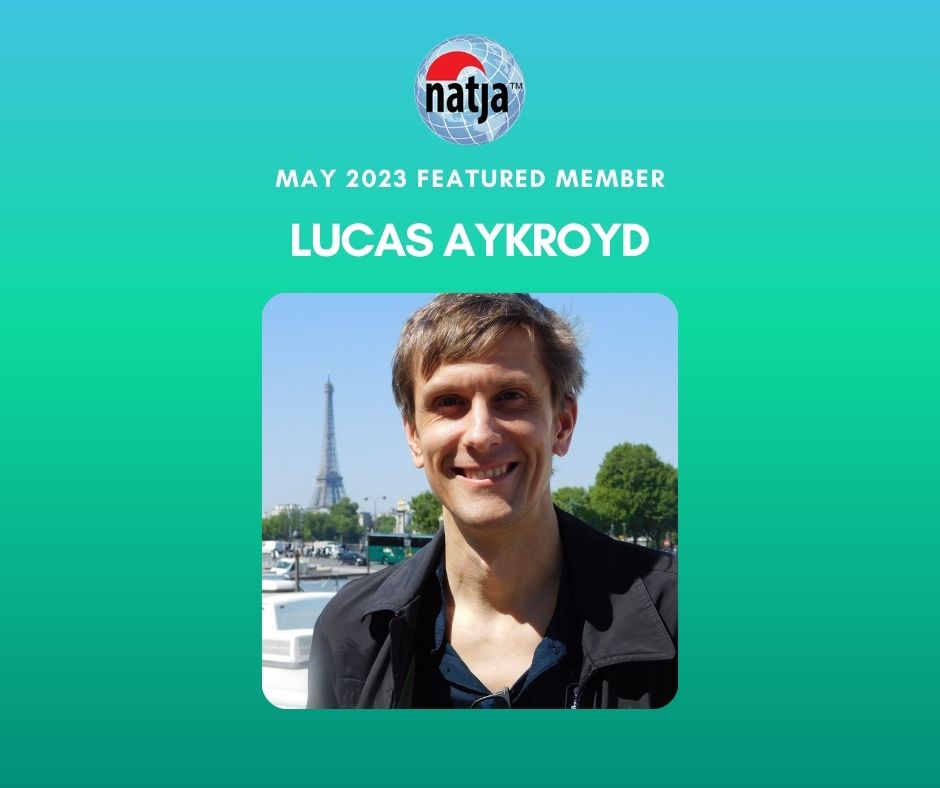Lucas Aykroyd is an award-winning writer, national newspaper columnist, and public speaker. He specializes in travel and sports. His work has appeared in the New York Times, the Washington Post, National Geographic, The Globe and Mail, the Toronto Star, the Vancouver Sun, and the Georgia Straight. He’s contributed to travel guidebooks for Fodor’s and Frommer’s. Lucas has won 11 medals in the North American Travel Journalists Association (NATJA) Awards, as well as a medal in SATW’s Lowell Thomas Travel Journalism Competition and a Travel Media Association of Canada (TMAC) award. He’s also been a Western Magazine Awards finalist. Since 1999, he’s covered the NHL, six Olympics, and 22 IIHF World Hockey Championships. His outdoor adventures include polar bear watching in Manitoba, rafting over a waterfall in New Zealand, and horseback riding on Easter Island. Based in Vancouver, he’s traveled to more than 40 countries. (He’s still waiting for Tourism Antarctica to return his call.)
1. What got you into travel writing?
My mother is Finnish and we used to visit Finland every summer, as well as other European countries. So I got excited about traveling the world from an early age. My first press trip was closer to my native Victoria, British Columbia, and involved sea kayaking with orcas off the north coast of Vancouver Island. Things just took off from there.
2. What’s the most challenging part of being a travel journalist for you?
My biggest challenge is using up all the material I get from any given trip. For instance, I took about 7,000 words in notes on a recent trip to Helsinki, which was primarily to cover the men’s world hockey championship. So far, that’s yielded an arts-themed story for the Globe and Mail, a lifestyle round-up for Dreamscapes, a food feature for Range, and a general tourism piece for the International Ice Hockey Federation website. Not enough hours in the day!
3. What is one thing [equipment or personal item] you can’t go without on the road?
I take along my resistance bands so that I can always squeeze in a hotel room workout if the gym is closed or non-existent. Or if the airport shuttle is leaving at 6 am. “Mens sana in corpore sano”…I believe this translates to “Life isn’t all chocolate strawberries and wine tastings, so drop and gimme 20!”
4. What’s your most unusual and/or memorable travel experience?
Spending a week on Easter Island among ancient statues, volcanic caves, and packs of wild horses is a wonderfully surreal memory. Being flown in a helicopter to hit a golf ball off a South African mountain seems a tad self-indulgent in retrospect. Attending a military conference with a 24-piece brass band in Ufa, the capital of Bashkortostan, was deafening and unforgettable. As for what the chimpanzees in Uganda’s Kalinzu Forest were doing up in the trees, I’ll leave that to your imagination. (Four experiences are enough, right?)
5. How did you learn about NATJA and why did you join?
NATJA came on my radar through conversations with other travel journalists, and I was intrigued by the awards program and professional development opportunities. Membership is another useful way to keep my finger on the pulse of the industry.
6. What is the best piece of advice you could give to a rookie travel journalist?
Stop worrying about what’s trending and start chasing the stories that get you excited. And then produce the most professional work you possibly can. Repeat! And have fun. Case in point: with my travel journalist pal Tim Johnson, I’ve dueted on Bon Jovi’s “Bad Medicine” in Nunavut, Hawaii, and Ethiopia. I’m not ruling out doing it on the moon.




